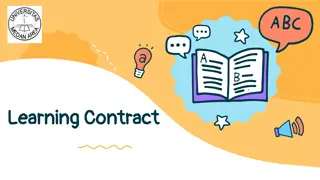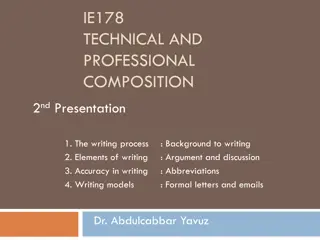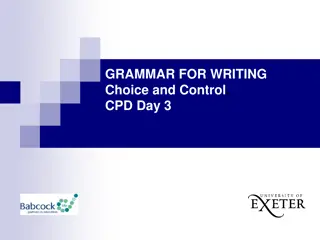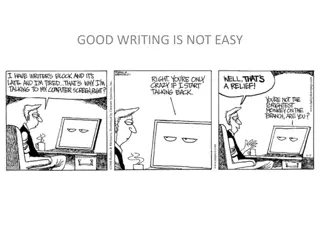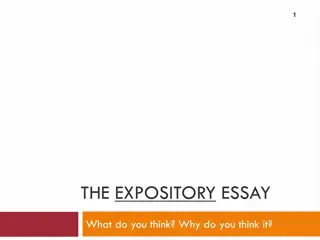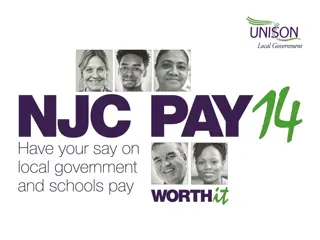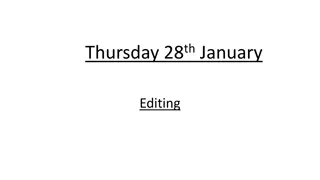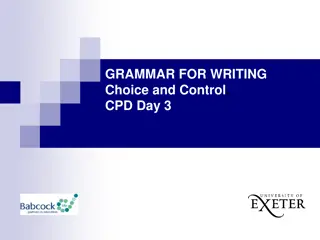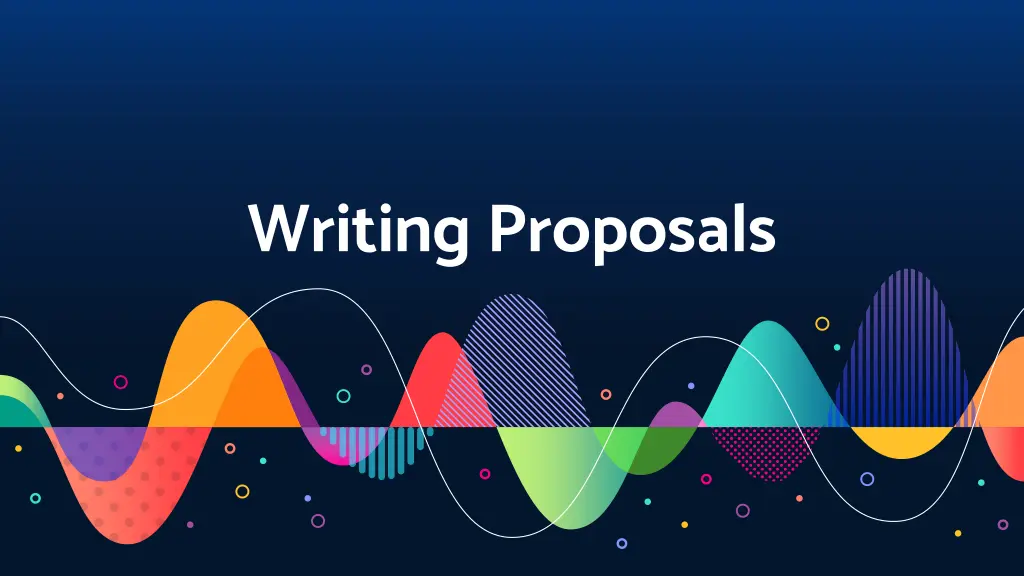
Effective Proposal Writing Guide: Strategies and Tips
Learn the essentials of writing proposals, from defining the proposal to navigating the writing process and logistics. Discover different types of proposals, deliverables, and the art of persuasion in proposal writing. Whether you are a professional seeking funding or a student conducting research, this comprehensive guide will help you craft compelling proposals to achieve your objectives.
Download Presentation

Please find below an Image/Link to download the presentation.
The content on the website is provided AS IS for your information and personal use only. It may not be sold, licensed, or shared on other websites without obtaining consent from the author. If you encounter any issues during the download, it is possible that the publisher has removed the file from their server.
You are allowed to download the files provided on this website for personal or commercial use, subject to the condition that they are used lawfully. All files are the property of their respective owners.
The content on the website is provided AS IS for your information and personal use only. It may not be sold, licensed, or shared on other websites without obtaining consent from the author.
E N D
Presentation Transcript
definition A proposal is an offer to carry out research or to provide a product or service. (PSTC, p. 291) Examples: A physical therapist writes a proposal asking her supervisor for funding to attend a conference; A defense contractor submits a proposal to design and build drones for the Air Force; A homeless shelter applies to a philanthropic organization for more funding to serve the homeless community.
Writing Process During the planning stage, you should be interested in your readers knowledge about and attitudes toward what you are proposing. When drafting a proposal, pay special attention to any instructions in the request for proposal (RFP), information for bid (IFB), or call for papers (CFP). If there are no instructions, follow the basic proposal outline we discuss in class. When revising, editing, and proofreading, remember that proposals usually have firm deadlines. Make sure that you build in time for revision and editing so that you can send out a polished proposal.
Proposal Logistics For this project, you are writing an external, solicited proposal. External proposals go to an organization outside your own. Solicited proposals are submitted in response to a request from the prospective customer. Organizations publish different types of statements when they are looking for a product or service: IFB: Information for Bid. Used for a standard product. Typically, the contract goes to the supplies with the lowest bid. RFP: Request for Proposals. Used for customized products or services. Often contains technical specifications. CFP: Call for Papers, an academic request for proposed presentations or publications on a particular research problem or question.
Deliverables Research Proposals are documents that promise to research a particular issue, then report on it. You will often write progress reports during this process, and when you have completed the project, you are typically expected to report on your findings. Writing such proposals is often a way to get the resources to carry out research. Goods and Services Proposals offer to supply a tangible product, a service, or a combination of the two. These proposals might be sent to manufacturers (for parts or raw materials) or to funding sources (for local organizations).
Proposals and Persuasion A proposal is an argument. A proposal convinces your reader: That you understand their context and their needs; That you have a plan and you are able to execute that plan; That you are a professional committed to fulfilling your promises. Contexts: The most crucial element of the proposal is the definition of the problem or opportunity to which the proposed project responds (PSTC, p. 296).
Proposals and Persuasion Tips on Context and External Proposals 1. understand something in it, contact the organization to clarify. 2. to help you convince your audience that there is a problem. 3. persuasive to your audience? Will you need a translator? Should you use plain language? Can your prospective customer do a read-through? Always start by reading your IFB, RFP, or CFP thoroughly. If you don t Analyze your audience s needs and backgrounds and use that information Analyze the culture of the organization to which you are submitting. What is
Proposals and Persuasion Describing Your Plan Once you ve shown that you understand the problem, you have to describe how you plan to solve it. This part of the proposal convinces your reader that you can respond effectively to the situation at hand. Demonstrate Your Professionalism Your audience needs to believe that you and/or your organization are committed to following through on your proposal. You can help convince them of this by showing them your credentials, giving a clear work schedule and budget, and describing quality-control measures.
Ethics and Proposal Writing To a large extent, proposals have to do with trust. To show your audience that they can trust you, you shouldn t exaggerate who will be participating in the project or when the project will be finished. You should be honest about the qualities of the finished product and honest about whether or not it will be finished under or over budget. Honesty in proposals helps you in three ways: First, it s simply the ethical way to work with people. Second, it helps you avoid legal trouble stemming from breach-of-contract. Finally, honesty keeps your business from getting a bad reputation.
Proposal Structure Executive Summary A one-page, single spaced summary of your proposal. Covers all the major elements of the proposal in one to two sentences each. You should define the problem, describe the proposed program, and describe your qualifications and experience. The summary may be the only part of the proposal that readers study in their first look at the document. Introduction This part of the proposal helps reader understand the context, scope, and organization of the proposal (PSTC, p. 300). You should define the problem in specific terms, indicate a clear purpose, provide readers a background on the problem, review relevant sources, indicate the scope of the proposal, preview the proposal s organization, and introduce and define key terms.
Proposal Structure Proposed Program This section of the proposal explains in specific terms what you want to do. Some tips for making this part of your proposal effective: Don t just say you will analyze data explain how you ll do it. If your project is discussed in recent literature, show your familiarity with scholarship by referencing what it does (and doesn t) do. For the most effective proposal, do preliminary research first. Your biggest task in this part of the proposal is to show your reader that research indicates that your project is likely to succeed.
Proposal Structure Qualifications and Experience In this section of the proposal, you show that you are able to carry out the project. This section describes both your credentials and those of anyone else on the team. This is also a place to state if your organization has ever completed similar projects successfully. Budget This section states how much the proposed plan will cost. Budget sections vary depending on how simple a proposal is, and whether it is an internal proposal. Many budgets are divided into direct costs (salaries and benefits, ravel costs, necessary equipment, materials, supplies) and indirect costs ( overhead secretarial and clerical expenses, operating expenses like utilities and maintenance).
Proposal Structure Appendixes Appendixes vary depending on the needs of your prospective customer and the type of project you are undertaking. Some information the appendixes might include: A supporting letter for the organization; Task schedule (usually presented visually); Description of evaluation techniques. How will you determine that the program is both effective and efficient?

